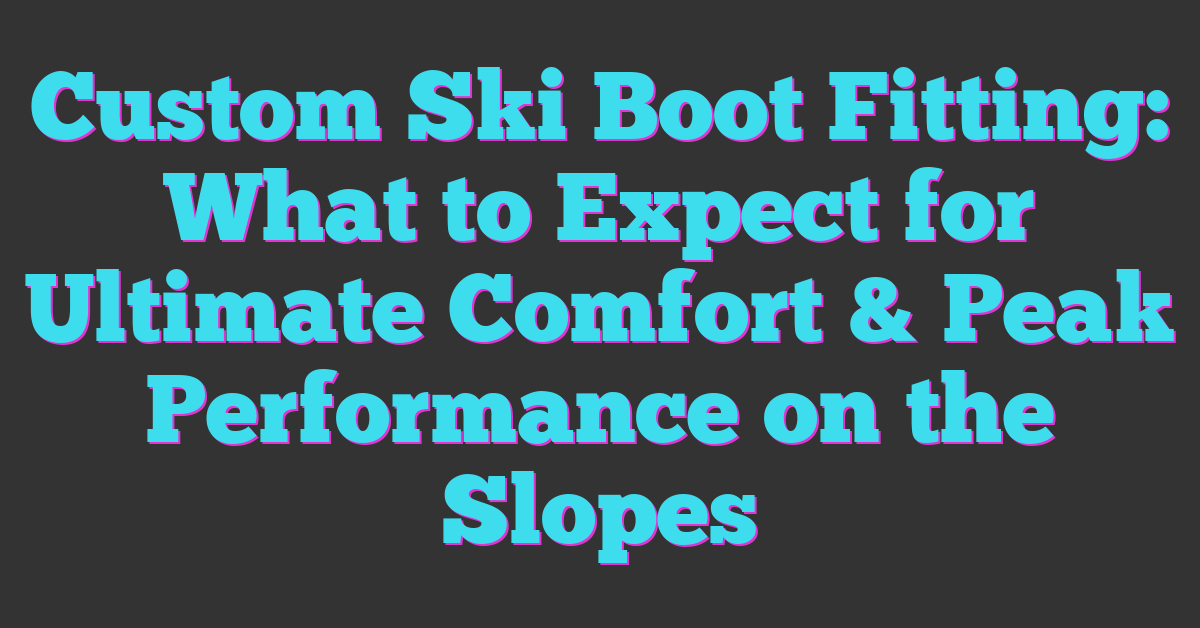I’ve always loved the thrill of skiing—the crisp mountain air, the rush of carving through fresh powder, the sense of freedom as you glide down the slopes. But with all that excitement comes an undeniable risk, and it’s one we can’t afford to ignore. Skiing is exhilarating, but it’s also unpredictable, and that’s where helmets come in.

It’s easy to think, “I’m careful, I don’t need one,” but accidents don’t play by the rules. Whether you’re a beginner or a seasoned pro, wearing a helmet isn’t just about following safety trends—it’s about protecting yourself from the unexpected. Trust me, there’s nothing cooler than staying safe while enjoying the sport you love.
The Importance Of Safety While Skiing
Skiing combines speed, skill, and the beauty of nature, but it also carries risks. High-speed descents, unpredictable terrain, and varying weather conditions create an environment where accidents can happen quickly. Keeping safety at the forefront ensures I can enjoy every aspect of the sport without hesitation.
Wearing proper gear reduces injury risks, especially in common incidents like falls or collisions. Helmets, for example, are essential for protecting against head injuries caused by ice patches or unexpected obstacles. According to the National Ski Areas Association, helmet usage has increased to over 83% among skiers and snowboarders, highlighting its recognized importance.
Awareness on the slopes also plays a huge role in safety. Watching for other skiers, following posted signs, and knowing my limits help create a secure environment for everyone. Safe practices on the mountain provide not just peace of mind but also allow me to fully immerse myself in the thrill of skiing.
Benefits Of Wearing A Ski Helmet
As someone who’s passionate about the thrill of skiing, I know staying safe keeps the adventure alive. Wearing a helmet isn’t just about following trends; it’s about enhancing the overall skiing experience.
Protection Against Head Injuries
The most important reason I always wear a helmet is its ability to protect against head injuries. Falls happen, no matter how skilled I am, and collisions with other skiers or obstacles can be unpredictable. A helmet reduces the risk of head trauma by absorbing impact forces, as supported by medical studies showing significant injury prevention. It’s reassuring to know I have a layer of protection if the unexpected happens.
Improved Visibility And Climate Control
Ski helmets aren’t just about safety; they enhance my time on the slopes. Many designs incorporate visors or allow for seamless goggle integration, improving visibility in fog, snow, or bright sunlight. Plus, helmets help regulate temperature by keeping my head warm in icy conditions while featuring vents to prevent overheating during intense runs. With these benefits, I feel comfortable in any weather.
Boosting Confidence On The Slopes
Wearing a helmet gives me added confidence every time I glide down the mountain. Knowing I’m safer allows me to focus on technique and enjoy the experience without hesitation. That peace of mind helps me tackle challenging trails and push my limits while respecting my abilities. A helmet isn’t just gear; it’s a companion for every skier who loves the sport like I do.
Common Misconceptions About Ski Helmets
Ski helmets often face unwarranted criticism despite their critical role in safety. Let’s address some common myths and set the record straight.
The Myth Of Helmets Being Uncomfortable
Helmets aren’t cumbersome or restrictive. Modern ski helmets are designed with lightweight materials and ergonomic shapes that fit comfortably even during long ski sessions. Advanced padding, adjustable straps, and custom-fit systems ensure a snug yet breathable fit. For me, my helmet feels like a natural extension of my gear. Features like ventilation channels and moisture-wicking liners keep me comfortable on both sunny and frigid days.
If anyone claims helmets are a hassle, they likely haven’t tried the latest options available. Leading brands offer practical features like removable ear pads, audio compatibility, and seamless integration with goggles.
Addressing Style And Appearance Concerns
Some believe helmets ruin the “cool factor.” I see it differently. Modern designs come in a variety of colors and sleek profiles, catering to every style preference. You can choose classic black, vibrant patterns, or minimalist aesthetics to match your personality. When I ski, my helmet doesn’t just protect me—it completes my outfit.
Innovations like integrated visors or built-in action camera mounts make helmets stylish and functional. It’s easy to spot pros and locals rocking helmets, proving safety and style can coexist on the slopes.
How To Choose The Right Ski Helmet
Finding the right ski helmet is as essential as mastering your turns on the slopes. It’s not just about safety—comfort and functionality can make or break a day of skiing.
Key Features To Look For
Durability stands out as a critical feature. A reliable helmet should adhere to safety certifications like ASTM F2040 or CE EN1077, ensuring it meets impact-protection standards. I always check for a sturdy outer shell paired with an EPS foam liner for optimal shock absorption.
Weight plays a role in long-term comfort. Lighter helmets reduce strain during all-day skiing sessions, especially during multi-day trips.
Ventilation adds to your experience. Look for helmets with adjustable vents, keeping your head cool on sunny days or warm during chilly descents. My helmet has multiple vent options, and it’s been a game-changer for regulating temperature.
Additional features can enhance convenience. Many helmets now include features like integrated visors, audio-ready ear pads, or action camera mounts. These extras make the helmet more versatile without compromising safety.
Proper Fit And Maintenance Tips
Fit determines safety. A helmet should sit snugly without gaps between the liner and your head. I use the size adjustment dial to ensure my helmet stays secure, even during fast, bumpy runs. Trying it on with your preferred goggles helps avoid gaps between the goggles and the helmet visor.
Strap adjustment ensures stability. The chin strap should feel comfortable and form a “V” below each ear with enough room to breathe but not so loose that the helmet shifts.
Routine cleaning prolongs a helmet’s life. After each trip, I remove the liner if it’s washable or clean it with mild, damp cloths to prevent odor buildup. I also store my helmet in a padded bag to protect it from dings and scratches off the slopes.
Replacement keeps safety standards intact. Experts recommend replacing helmets every 5-7 years or sooner if it sustains a significant impact. For me, safety always trumps sentimental value.
Stories And Statistics That Prove The Need For Helmets
I’ve seen and heard countless stories on the slopes that highlight the critical importance of helmets. From personal experiences to hard data, the message is clear: helmets save lives.
Real-Life Incidents On The Slopes
A skier I met last winter shared how his helmet prevented a tragedy during a high-speed collision with another skier. He suffered a minor concussion, but without the helmet, he could’ve faced a skull fracture or worse. Stories like his are common. I’ve witnessed situations where falls on icy patches led to helmeted skiers walking away with just bruises, while helmetless ones faced more severe outcomes requiring medical attention.
Olympian Lindsey Vonn once credited her helmet for saving her life during a downhill crash at over 80 mph. Stories of snowboarders hitting hidden obstacles or newcomers losing control emphasize how no one is immune to accidents, regardless of their experience level.
Data Supporting Helmet Usage
The numbers back up what we see on the slopes. A study published in the Journal of Trauma and Acute Care Surgery found that helmets reduce the risk of severe head injury by 60%. According to the National Ski Areas Association (NSAA), helmet use among skiers and snowboarders has increased to 83%, correlating with a decline in traumatic head injuries over the years.
Another report from the Canadian Medical Association Journal revealed that helmeted skiers and snowboarders are three times less likely to suffer fatal head injuries than those without protection. These statistics reinforce what I see every season: helmets are indispensable for safety.
Conclusion
Skiing is an incredible sport that combines adventure, skill, and breathtaking scenery, but safety should always come first. Wearing a helmet isn’t just a precaution—it’s a smart, non-negotiable choice that protects you while enhancing your time on the slopes. With modern designs offering comfort, style, and advanced features, there’s no reason to skip this essential gear.
By prioritizing helmets and staying mindful of your surroundings, you can enjoy the thrill of skiing with greater confidence and peace of mind. Safety doesn’t take away from the experience—it makes it even better. So gear up, hit the slopes, and make every run unforgettable!
















